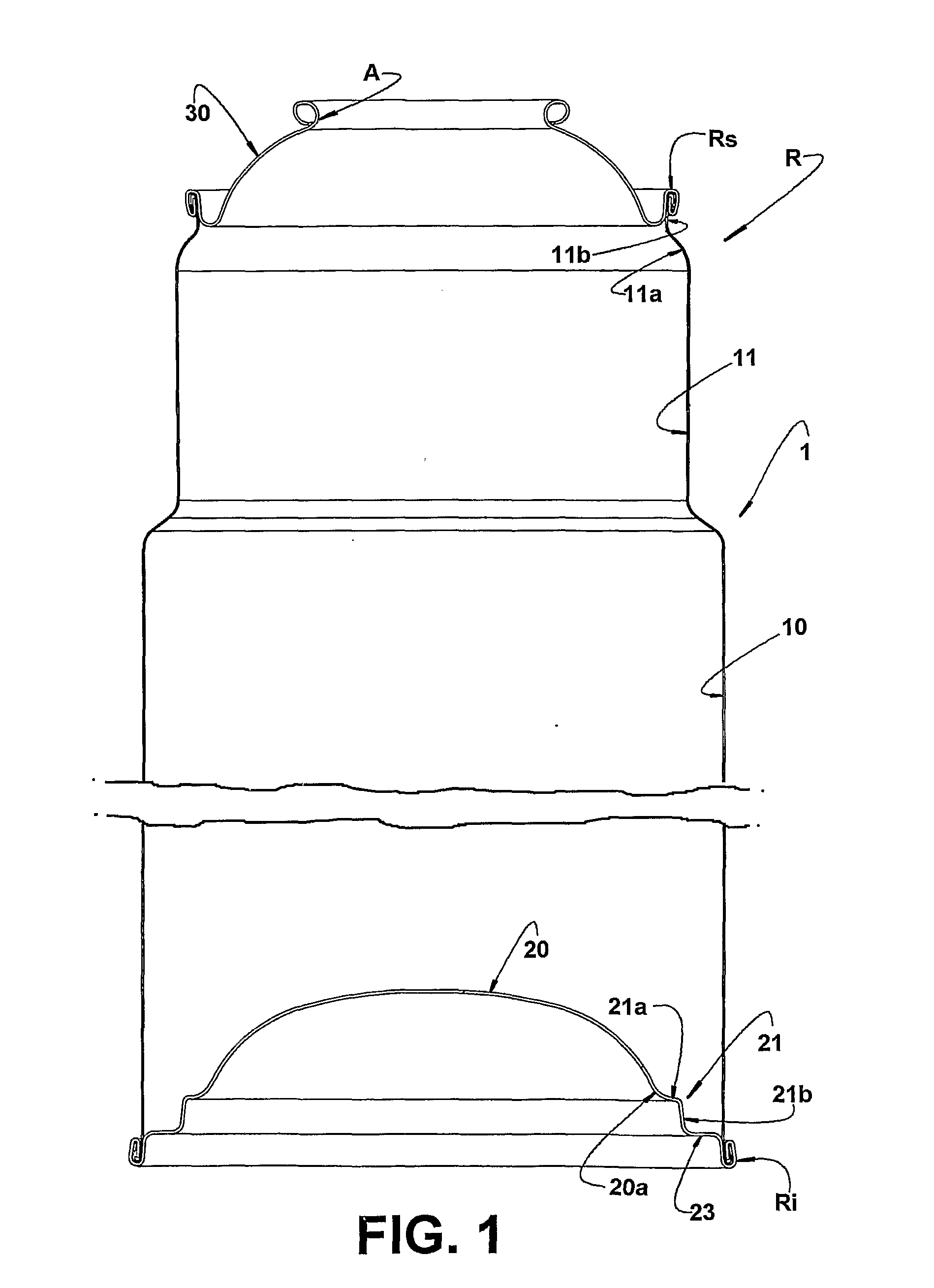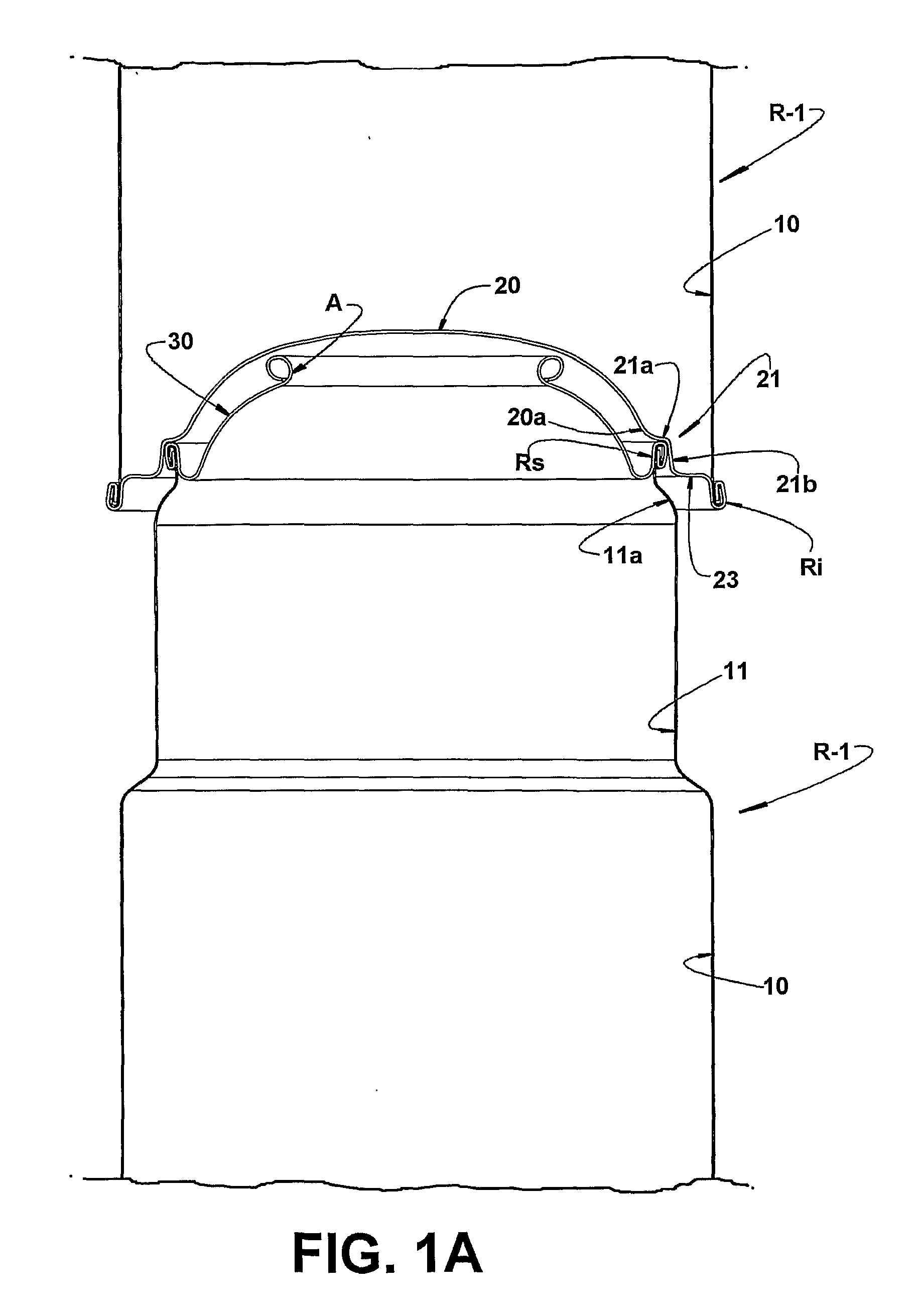Container for pressurized fluids
a technology for containers and fluids, applied in the field of containers, can solve the problems of affecting the relative transversal displacement of containers, allowing the occurrence of undesirable shocks between the side walls, and damage to the outer finishing of the cylindrical side walls of these containers, and achieve the effect of preventing relative transversal displacemen
- Summary
- Abstract
- Description
- Claims
- Application Information
AI Technical Summary
Benefits of technology
Problems solved by technology
Method used
Image
Examples
second embodiment
[0039]As can be seen, the frusto-conical shape of the guiding skirt portion 21b of the seating region 21, allows the latter to be seated around the lid 40, producing a mutual radial locking between the two containers, even considering the dimensional tolerance variations of the elements constitutive of these containers. Thus, the guiding skirt portion 21b of frusto-conical shape presents the smaller inner diameter smaller than the outer diameter of the side wall 41 of the lid 40 and the larger inner diameter larger than the inner diameter of said side wall 41 of the lid 40, in an upper edge region of the latter, in which it is connected to the top wall 42. FIGS. 2, 2A, 2B and 2C illustrate a second constructive form for the bottom wall 20 of the container R. In this second embodiment, the bottom wall 20 presents at least three seating regions 21 which are equally and angularly spaced apart along the circular contour of the container R, said seating regions 21 projecting downwards fr...
first embodiment
[0041]It should be understood that the seating of the multiple seating regions 21, on the upper double seam Rs or on the lid 40 of a container R disposed immediately below in a vertical stack of said containers, is carried out exactly in the same way already described in relation to the bottom wall 20. However, it should be considered that the support region between the bottom wall of the upper container and the upper double seam Rs or the lid 40 of the lower container is defined not around the whole circumference of the containers, but only in the circumferential extensions defined in each of the seating regions 21.
[0042]As illustrated in the enclosed drawings, and independently of the embodiment of the seating region 21, either single or multiple, its incorporation, in a single piece, to the bottom wall 20 is made through the arched interconnection regions, in order to prevent stress concentrations which are harmful to the resistance required for said bottom wall 20 as a function ...
PUM
 Login to View More
Login to View More Abstract
Description
Claims
Application Information
 Login to View More
Login to View More - R&D
- Intellectual Property
- Life Sciences
- Materials
- Tech Scout
- Unparalleled Data Quality
- Higher Quality Content
- 60% Fewer Hallucinations
Browse by: Latest US Patents, China's latest patents, Technical Efficacy Thesaurus, Application Domain, Technology Topic, Popular Technical Reports.
© 2025 PatSnap. All rights reserved.Legal|Privacy policy|Modern Slavery Act Transparency Statement|Sitemap|About US| Contact US: help@patsnap.com



